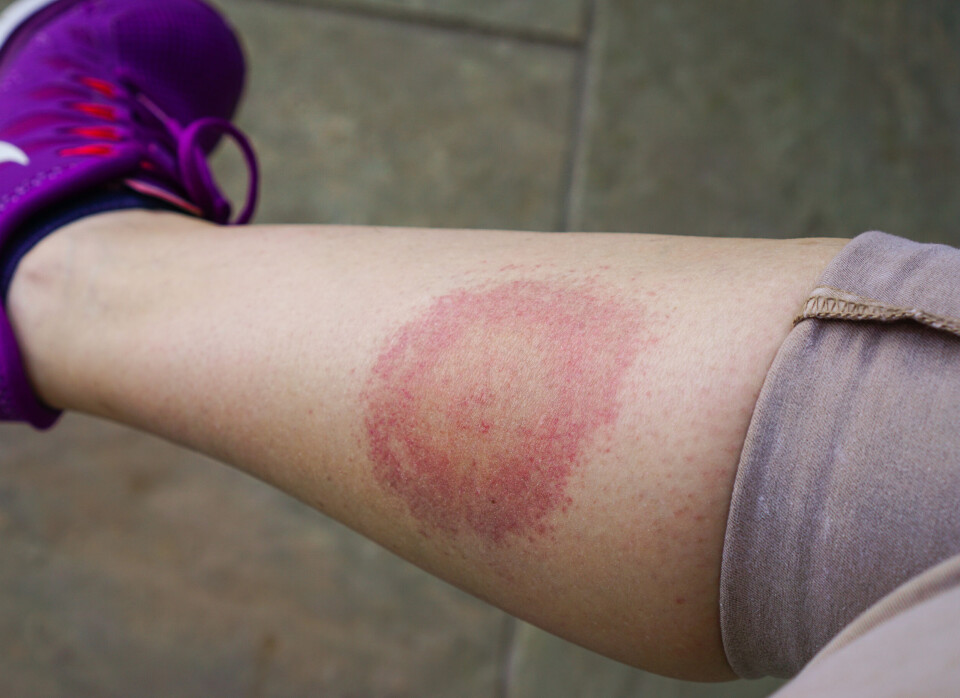-
Festivals, holidays and places to visit in France in April 2025
Including a gladiator battle in a Roman arena, an international garden festival and the Paris marathon
-
Many Société Générale customers to be charged additional fees from April
There is some good news for international banking and instant transfers, however
-
Why gas prices in France are rising in April - and by how much
It comes after six consecutive monthly rises. Try these tips to reduce your bills
Lyme disease in France: Official advice on how to avoid a tick bite
Up to 20% of ticks in France are infected with Lyme. Here is the official advice on how to avoid a bite and infection

As temperatures rise in France ahead of summer, so does the risk of being bitten by a tick carrying Lyme disease, prompting the agricultural research centre Inrae to offer advice on how to avoid it.
Ticks live in wooded, green areas, especially in areas of shade and damp, such as under trees or around stone walls. Up to 20% of them carry Lyme disease in France, depending on the area. The disease is transmitted when an infected tick bites.
The risk is more pronounced in the east and centre-east than in the west, and some parts of the south, but the issue is spreading.

Inrae has created a map showing the incidence of ticks in the area, with the orange and red areas more at-risk
MAP: Inrae.fr
Read more: Where in France you are most at-risk from Lyme disease ticks
Read more: MAP: See the areas of France that suffer most from ticks
Lyme disease - especially when untreated or in severe cases - can cause fatigue, skin issues, heart, eye and neurological problems.
Advice to avoid it includes:
Prepare before going outside
If you are planning a hike or picnic in a wooded area or forest, you are advised to “prepare before going out”, said Virginie Renaud, volunteer at the France Lyme association to BMFTV.
She and the public health association Santé publique France recommend:
- Wearing a hat to protect against ticks falling from trees
- Tuck your trousers into your socks to avoid ticks climbing up from the ankles
- Wear long-sleeve tops and long trousers
- Stay on paths and avoid going into long grass
- Spray anti-tick and anti-insect repellent on your clothes and skin
It is estimated that between 30-50% of tick bites occur in gardens and countryside parks, not only in wild forests.
Check your skin after going outdoors
After you return from spending time outdoors, you are advised to check for ticks. The forestry office l'Office national des forêts recommends:
- Inspect your body in detail, especially in skin folds and creases
- Check your scalp, behind your ears and neck
Ticks are only 1-3mm wide, so can be easy to miss. Pets can also be affected, so be sure to brush them or de-tick them after they come indoors, too.
You can also wash your clothes at 60C, or tumble dry them for at least an hour, as ticks do not like dry heat.
What if you suspect a bite?
The Assurance maladie website Ameli recommends:
- Taking out the tick as soon as possible. Use a tick removal device (un tire-tique) to get hold of the tick and pull it out, without crushing it.
- If in doubt, ask for advice at a pharmacy or GP office
- After taking out the tick, disinfect the area and keep watch on the area for the next month
Ameli adds: “If you see a red rash or inflammation start to spread, between three and 30 days after the bite, you should see a doctor, as it could be an ‘erythema migrans’, which is an early symptom of Lyme disease.”
This rash is usually circular and red, sometimes with a white area in the middle, in the form of a ‘bull’s eye’ pattern.
Related articles
New campaign to alert walkers to risk of Lyme disease in France
Be aware: tick bites can cause Lyme disease, says survivo
























